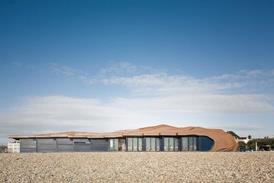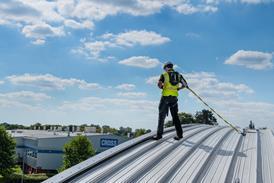Contractor brought in to help Salford University identify best ways of greening pre-1920 properties
Contractor ISG has been appointed by Salford University to an innovative project to test how to improve the sustainability of Victorian terraced housing.
The contractor with build a full-scale replica of terraced property within a three-storey sealed testing chamber in order to investigate the best ways to upgrade the energy efficiency of the 15% of homes which were built before 1920. These homes account for 23% of domestic carbon emissions.
According to Salford University, ISG will use reclaimed building materials including timbers, roof tiles and over 20,000 bricks from North West terraced homes, as well as adopting traditional construction techniques.
The Energy House will take around three months to build before being fitted out as a typical, functional 21st century family home. The university said it will use the testing chamber to replicate a range of external climatic conditions within the testing chamber, including rain, snow, winds and up to 80% humidity.
Pre-1920 homes account for 23% of domestic carbon emissions.
It said that naturally occurring variables such as missing tiles, blocked chimneys and even a build-up of bird droppings on the roof will be introduced into experiments to examine their impact on environmental performance.
Steve Waterworth, the University of Salford’s Energy House project manager, said the structure would be finished by October, with a four month fit-out programme to follow. He said: “We will be presenting the first tranche of Energy House data at the UK’s first conference dedicated to the issue of sustainability and retro-fitting, being held at the University, in January.”
Jim Parker, Regional Managing Director at main contractor ISG said the experiment could prove hugely influential for homeowners, landlords and maintenance and refurbishment companies.
He said: “The technical complexity of recreating a pre-1920’s style terrace property within a reinforced concrete testing chamber, to the exact specifications of that era, is an interesting challenge. We have consulted a number of experts both within the business and externally to ensure that the structure does not incorporate any modern materials or building techniques that might have the impact of skewing the University’s measurements.
The project is being supported by the BRE.























No comments yet